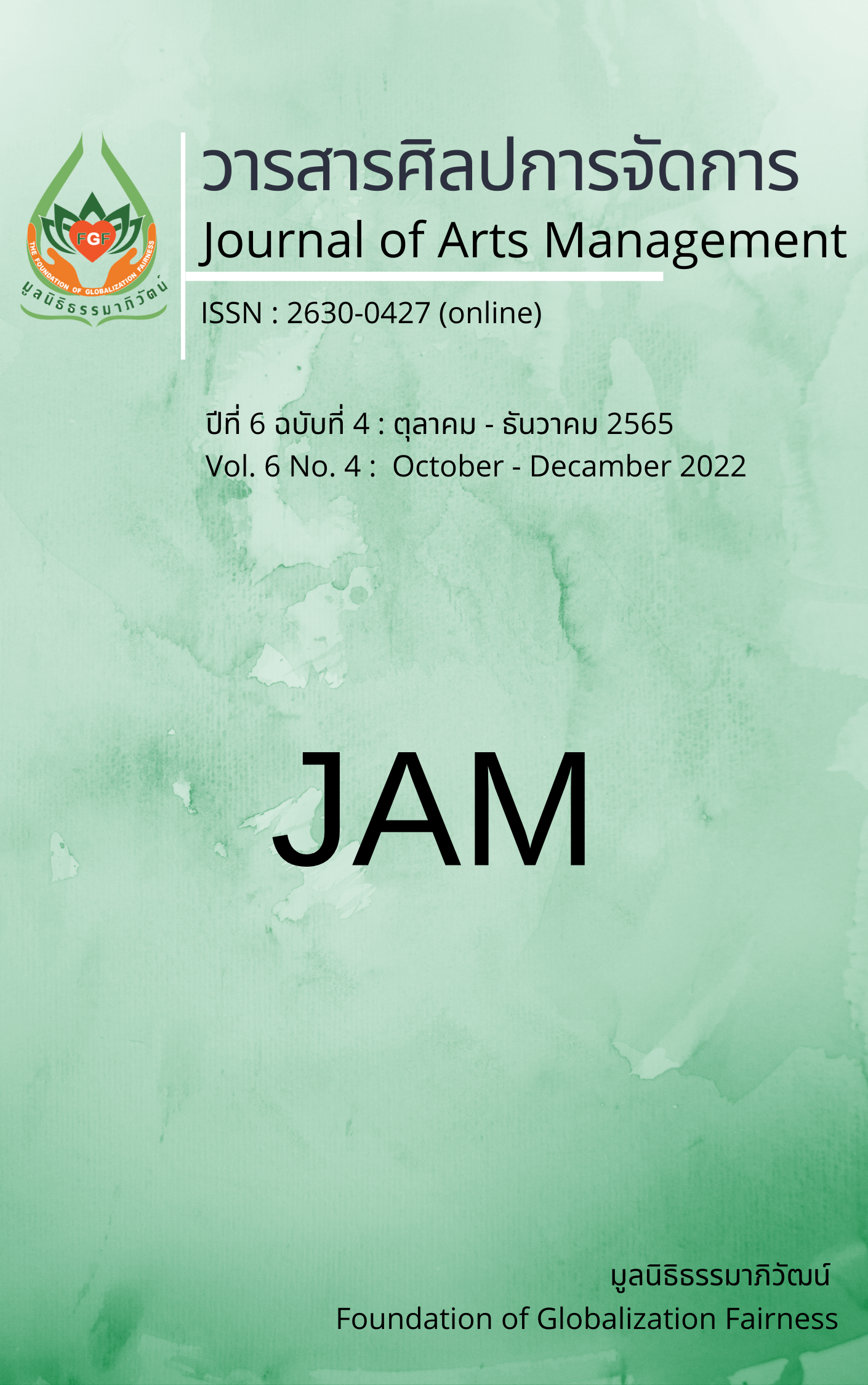Creating Community Based Tourism Routes by Train to Support Free Independent Tourists in The Western Region of Thailand
Main Article Content
Abstract
This article aimed to study 1) the behavior and needs of independent tourists traveling by train; 2) the context and assess the potential of community tourist attractions in the western region; and 3) the creation of community-based tourism routes by railway to support free-independent tourists in the western region. The areas studied include Nakhon Pathom, Ratchaburi, Kanchanaburi, Phetchaburi, and Prachuap Khiri Khan. It was mixed-method research. The research results were found as follows:
1. The behavior and needs of independent tourists traveling by train in the western region's community-based tourism in the following areas: The FIT tourist’s behavior travels for relaxation with friends once per month. Most of them traveled sightseeing, and the average cost throughout the trip was 1,001–3,000 baht. They have traveled to community-based attractions in the western region by getting information about tourist attractions from the internet. Their tourist motivation was self-improvement, including the tourist needs composed of 1) ease of access, 2) facilities, and 3) attractiveness in community-based tourist attractions.
2. Contextualize and assess the potential of community tourist attractions in the western region, including waterfront community-based tourist attractions, old market community-based tourist attractions, multicultural community-based tourist attractions, Thai Song Dam community-based tourist attractions, eco-community-based tourism sites, and a local fishermen's community-based tourist attraction.
3. There were four routes to build community-based tourism by train in the western region, as follows: 1) community-based tourism route by train for leisure and fishing along the sea; 2) community-based tourism route by train to learn outside the classroom and get a local lifestyle; 3) community-based tourism route by train to experience the local culture and wisdom along the historic railway line; and 4) community-based tourism route by train to respond to emotions of lifestyle along the railroad and river.
Article Details

This work is licensed under a Creative Commons Attribution-NonCommercial-NoDerivatives 4.0 International License.
Views and opinions appearing in articles in the Journal of Arts of Management It is the responsibility of the author of the article. and does not constitute the view and responsibility of the editorial team I agree that the article is copyright of the Arts and Management Journal.
References
Ballou, R.H. (2004). The Evolution and Future of Logistics and Supply Chain Management. European Business Review, 19(4), 332-348.
Defiance ETFs. (2022). Post-pandemic trends spell good news for rail travel. https://www.defianceetfs.com/post-pandemic-trends-spell-good-news-for-rail-travel/
Fabos, J. G. (2004). Greenway planning in the United States: its origins and recent case studies. Landscape and urban planning, 68(2-3), 321-342.
Giampiccoli, A., & Mtapuri, O. (2021). From Conventional to Alternative Tourism: Rebalancing Tourism towards a Community-Based Tourism Approach in Hanoi, Vietnam. Social Sciences, 10(5), 176.
Jittungwattana, B. (2015). Marketing management for tourism industry. Fern Khaluang.
Jullasikkee, M. (2020). Thainess Tourism by Cultural Railway Route. Journal of Thai Hospitality and Tourism, 15(1), 85-94.
Khumthong, T. (2016). Consumer Insight of Thai Tourists’ Nostalgic Rail Journeys[Master’s Thesis, Thammasat University].
Kiawmeesuan, V. (2021). Guidelines for The Development of Nostalgia Tourism Routes on The Green Line BTS Route (Morchit-Saphan Mai-Khu Khot). Journal of Business, Economics and Communications, 16(1), 114-126.
Klaypayak, N., & Aiyasanon, C. (2018). Forming Tourism Logistics Service of the State Railway of Thailand: A Case Study of The Special train tour Death Railway route. Journal of Logistics and Supply Chain College, 2(2), 38-45.
Ministry of Tourism & Sports. (2016). Community Based Tourism Handbook. Ministry of Tourism & Sports.
Office of the National Economic and Social Development Council: NESDC. (2018). National Strategy 2018-2037. https://www.nesdc.go.th/download/document/SAC/NS_PlanOct2018.pdf
Pinkaew, W. (2008). Study for Ecotourism Route Proposal in Mueang District, Phetchaburi Province[Master’s Thesis, Srinakharinwirot University].
Pitipat, S., & Na Nong Khai, K. (2013). Thai Tourist Behavior toward Visiting the Red Water Lily Lake Tourism Destination, Kampawadee District, UdonThani. Humanities and Social Sciences Research Journal, 9(3), 245-261
Rewtrakunphaiboon, W. (2014). Tourist behavior. Bangkok University.
Ritchie, H. (2020). Which form of transport has the smallest carbon footprint?. https://ourworldindata.org/travel-carbon-footprint
Rocharungsat, P. (2020). Community Tourism Potential Development: A Case Study of Nongjok Community, Phetchaburi. Journal of Humanities and Social Sciences Review, 22(1), 21-38.
Ruiz-Ballesteros, E., & Cáceres-Feria, R. (2016). Community-building and amenity migration in community-based tourism development. An approach from southwest Spain. Tourism Management, 54, 513-523.
Soponsiri, S. (2011). Tourist behavior analysis. Inthaninpress.
Takojeen, C. (2016). The Influence of Service Quality Expectation, Service Motivation, and Image of State Railway of Thailand on Passengers’ Intention to Use First Class Railway Service[Master’s Thesis, Bangkok University].
Tan, E., & Abu Bakar, B. (2017). Beyond the last train: Creating a mobile-driven low carbon rail trail. In Proceedings of the 3rd Global Tourism and Hospitality Conference (pp. 205-219). Hong Kong: School of Hotel and Tourism Management, The Hong Kong Polytechnic University.
Tantiprasertsuk, P. (2021). Analysis of the development direction of the Tourism and Hotel Industry and Events to the year of change 2021. Silapakorn University.
Tourism Western Australia. (2008). Five A’s of Tourism. The Western Australian Tourism Commission.
Wachyuni, S. S., & Kusumaningrum, D. A. (2020). The effect of COVID-19 pandemic: How are the future tourist behavior. Journal of Education, Society and Behavioural Science, 33(4), 67-76.
Wirtz, J., & Lovelock, C. (2021). Services marketing: People, technology, strategy. (8th ed.). World Scientific.
Yiamjanya, S. (2019). Railway Tourism: Diversifying Thai Tourism; A case study of the Mae Klong Railway. Research and Development Journal Suan Sunandha Rajabhat University, 11(1).


